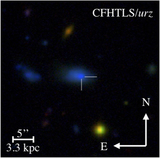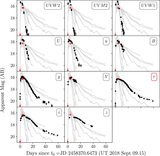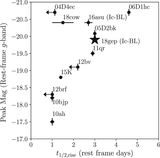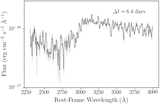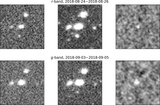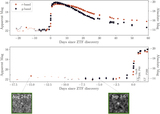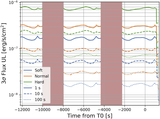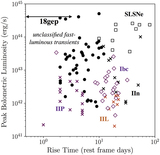Image Details
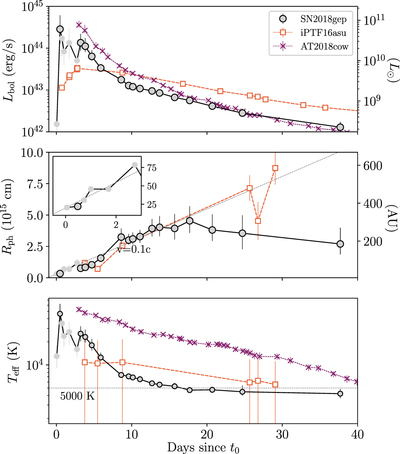
Caption: Figure 9.
Evolution of blackbody properties (luminosity, radius, temperature) over time compared to the Ic-BL SN iPTF16asu and the fast–luminous optical transient AT2018cow. The light gray circles are derived from optical data only. The outlined circles are derived from UV and optical data. Middle panel: dotted line shows ﹩v=0.1c﹩. Note that ﹩R\ne 0﹩ at t0, and instead ﹩R(t=0)=3\,\times \,{10}^{14}\,\mathrm{cm}﹩. Due to the scaling of our plot we do not show the radius evolution of AT2018cow, which drops from ﹩8\times {10}^{14}\,\mathrm{cm}﹩ to ﹩{10}^{14}\,\mathrm{cm}﹩ on this timescale. Bottom panel: dotted horizontal line shows 5000 K, the recombination temperature for carbon and oxygen. Once this temperature is reached, the photosphere flattens out (and potentially begins to recede).
Copyright and Terms & Conditions
© 2019. The American Astronomical Society. All rights reserved.


